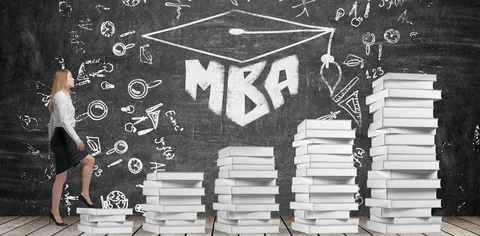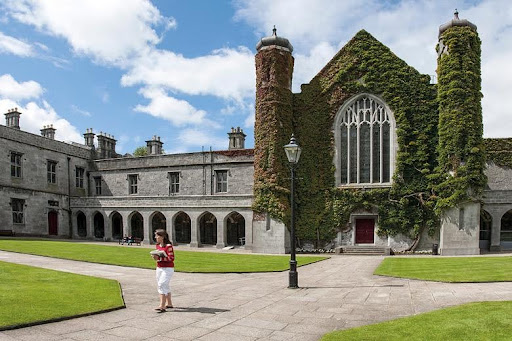
Ireland’s Digital Education Revolution: Shaping the Future of Learning in the 21st Century
Moving into the depth of the 21st century, technology is bringing changes to our lives in every sector including education. The way students learn and teachers teach, everything is transformed making it more accessible, personalized, and engaging. This is due to the rise of technologies like VR, AR, and different digital platforms. With new opportunities and challenges waiting at the door, this transformation is accepted by both teachers and students.
In this blog, we will learn the ways technology is shaping the future of education. So let’s educate.
Technology shaping the education in 21st century
Using AI to create a personalized learning experience
One of the most prominent impacts the technology has on the education is to create a personalized learniOne of the most prominent impacts the technology has on the education is to create a personalized learning experience. This is achieved through AI. The tools using AI-driven data analyze the performance, learning style, and progress of the students. Then design a customized learning plan that can cater to their needs. This personalized approach helps students to gain knowledge at their own pace. They can learn complex concepts with ease. Educational institutions looking to implement such sophisticated systems might partner with AI solutions providers specializing in the education sector to develop and integrate these personalized learning platforms.
Additionally, students are benefitting from the AI. Instead of looking for services like assignment help Ireland or assignment writers near me, they use AI to complete their assignments and help them achieve good grades.
Instant feedback and guidelines
Using AI, the students can make use of tutoring systems and learn by receiving instant feedback. The learning process with feedback and guidance helps them to overcome challenges and improve their understanding of complex topics. Additionally, AI can identify the individual’s area of improvement and provide them with resources that can help them overcome those challenges. This not only enhances academic performance but also boosts the confidence of the students helping them to increase their motivation.
Learning experience with VR and AR facility
Virtual Reality and Augmented Reality are the key technologies that help in building a better learning experience for students and Ireland is using them well. Through these technologies, students can engage better with the subject and allow exploration through virtual trips to other locations. Students have also gained exposure to practical projects. For instance, students can go on visual trips to a museum, surgical residents can explore the inner body of humans, or engineers can design virtual models for the audience.
This makes the learning experience more engaging and memorable and students can retain the information for a longer time. The gap between theory and practice can be bridged through VR technology. Students can apply their theoretical knowledge in practice before entering a professional career. This experience will benefit more students who belong to medicine, engineering, and the art fields. These fields’ practical skills are essential.
Access to education through global platforms
Digital platforms are playing their role in expanding access to education. Learning opportunities are now available to a global audience. Enrolling in online courses and signing up for e-learning platforms, students get a ticket to access high-quality educational content from all corners of the world. This shift has proven fruitful for those individuals who face difficulty accessing traditional educational institutions due to geographical, financial, and other barriers. The schedules are flexible and students can work at their own pace.
Opening doors for collaboration and communication
Collaborating and communicating in education has become easy with the emergence of technological tools. This allows students and educators to connect in new ways. Using different available tools facilitates individuals in group projects, discussions, and feedback. Now, when the students have to write an essay, they can get help from people around the globe asking for samples instead of looking for services like essaymills or others. Promoting a collaborative learning environment where each person can facilitate working in pairs, share their ideas, and support each other throughout the learning journey.
Gamification
One of the common trends in the digital transformation added to the education sector is adding of games in the lesson plans. Through these games, learners can build and polish their cognitive skills and acquire valuable knowledge. They can better understand the theory of obstacles and learn the ways to solve issues by improving their critical thinking skills.
Although it might seem like a source of entertainment for the learners initially, the motivation to learn using the ideal and favorable situations helps teachers to achieve the set goals.
Learning from cross-cultural exchange
With new tools to connect with people around the globe without any boundaries, cross-cultural learning is one of the essential components of the learning experience in the 21st century. Whether students or teachers, they can connect with people from different boundaries fostering cultural competence, empathy, and global citizenship. Exchanging curriculum and learning documents broadens the perspectives and prepares students to serve in diverse cultures and know about global challenges.
FAQs
What type of curriculum is being taught in the 21st century?
The 21st century has created space for skill-based syllabi instead of traditional syllabi. Students are taught to apply their knowledge in practice apart from rote memorizing and clearing exams. The hands-on experiences are allowing students to grab dream jobs in the future.
What is unique in 21st-century learning?
With the world revolutionizing with emerging technologies, practicing critical thinking skills, creativity, collaboration, and communication are important soft skills. These are to be learned by the individuals to survive in this century and future.
How is the use of AI promoting personalized learning?
Using AI, educators can design lesson plans according to the needs of individuals. Students can also work on their strengths and weaknesses. They can use technology to help them overcome those obstacles.
How is the education system of the 21st century?
The education system followed in the recent century is student-centered. The students are engaged in various tasks that allow them to learn on their own using the available resources. Moreover, they can use technology to track their process of learning and look for areas to improve.
The final comment
The future of education is shaped by technology in different ways. Either it is using AI to craft personalized lesson plans meeting the needs of individuals to using VR and AR in education to explain complex topics.
Technology brings change to lives, its addition to education helps individuals to learn new ways to survive. Institutions and educators can engage students in activities and prepare them for the challenges in the future.



